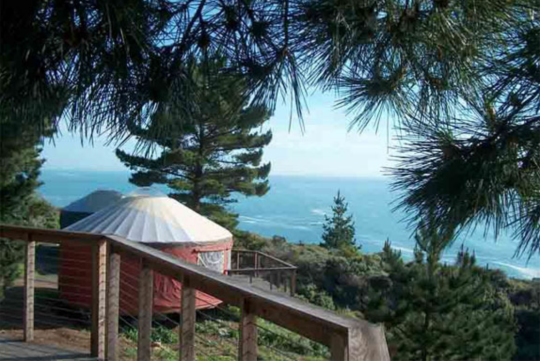
An Interview with Big Sur Yurt Hotelier John Handy
Eight years ago, I wrote a travel article for a magazine about a niche-popular but still-under-the-radar collection of Big Sur yurts overlooking the Pacific called Treebones. My wife and I had stayed there multiple times but we’d returned on the November weekend of Santa Barbara’s famous Tea Fire, when the Santa Ynez Mountains ignited like a Roman candle (not unlike this past summer’s Big Sur blaze). Despite its heated pool and excellent restaurant, Treebones was— and perhaps remains—too rustic for the California traveler who considers a Hyatt roughing it. But it feels like an ideal way to spend time in a special area that has offered respites to writers for some time. I interviewed Treebones’ owner John Handy the night after the Tea Fire began. Handy, who was also a volunteer firefighter for the Big Sur area, had once worked as a toy executive in Los Angeles before he decided to change his life and leave the city behind. We had this conversation at a picnic table near his lodge.
—Adam Baer
THE BELIEVER: Are the winds always this rough here? It felt like our yurt was moving last night but it couldn’t have been moving in a dangerous way, right?
JOHN HANDY: The Santa Ana winds are supposed to be following these, whatever they are, so it’ll be even more windy soon. We have winds of all kinds. It can get stronger than this, for sure. I’m guessing they were 20 mph last night when you were afraid to fall asleep for fear of blowing away. We’ve had 60 mph’s gusting up some nights, and we have some that gusted as high as 80 and knocked road-signs down. It’s not all the time, just once in a while.
BLVR: Why’d you build Treebones? How’d it come about? And why here?
JH: When we wanted to build this place, I was already traveling all over the world, so I was staying in hotels all the time. I wanted to do something that was unique, really different, that would really be specific to this piece of property. We had one idea in mind, which is “perching lightly.” We have that on our Web site: “perch lightly on the edge.” Because when we walked around here, on this piece of land, well, the only building that had ever been built was on the flat area down where the parking lot is, and it was a lumber mill. No one had ever built any house or anything up here, so whatever we wanted to build, we wanted to be able to stick it on the sides of...
You have reached your article limit
Sign up for a digital subscription and continue reading all new issues, plus our entire archives, for just $1.50/month.
Already a subscriber? Sign in




